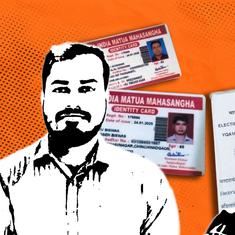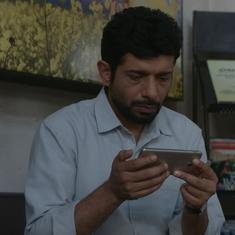Is the Asian News International news agency “extorting” YouTubers who use a few seconds of its content in their videos? Or are YouTubers guilty of “stealing” from ANI by using its content without permission?
On May 25, YouTuber Mohak Mangal alleged that ANI exploits YouTube’s copyright policies to arm twist content creators into buying expensive licences. Other creators have made similar claims.
At the heart of this dispute is a legal question: does the use of ANI content by YouTubers qualify as “fair use”?
Copyright legally grants the creator of an original work control over how that work can be used by others. Others cannot copy, share or sell the work without permission. Fair use is the legal principle aimed at promoting freedom of expression by allowing the use of copyrighted material for purposes such as critiques, reviews, teaching and news reporting.
‘Qualitative, not quantitative’
Most of the prominent YouTubers allegedly targeted for copyright infringement by ANI have adopted the fair use defence.
Legal experts told Scroll that are no hard and fast rules in Indian law to determine what is fair use.
The broad considerations for fair use usually take into account the intent of the user, the purpose of the use of the copyrighted material and the potential to economically impact the original creator’s market.
“There is a misconception that fair use protects the usage of video content of only a few seconds,” said Ameet Datta, intellectual property lawyer and founder of law firm, ADP Law Offices.
Datta gave the example of the musical theme from the James Bond films. The recognisable part of the theme “is barely 17-18 seconds”, he said. “But if you use even six seconds of that, you have used the theme. This is why the test is qualitative, not quantitative.”
Prashant Reddy T, a legal researcher who has written extensively on copyright law, said courts have held the use of short clips as copyright infringement. This was in the context of news channels using the content of sports broadcasters.
So far, no Indian court has ruled on the fair use of copyrighted content in a YouTube video. ANI did not respond to Scroll’s email requesting comment on the matter.

Copyright versus ‘fair use’
Under India’s Copyright Act, 1957, fair use – called “fair dealing” in the text – is one of the exceptions to copyright.
Jameela Sahiba, Associate Director at The Dialogue, a technology policy think tank, told Scroll that courts have identified three factors when trying to determine fair use.
The first is the quantum of the copyrighted material used. “Small clippings of eight to 10 seconds used in a bigger video of over 20 minutes for purposes of information dissemination might fall outside the nature of violation that copyright protects,” she said.
The second factor is whether the use of the ANI footage was for one of the purposes outlined in the fair use provision of the act: research, criticism, review or reporting. “Transformative use, where new meaning or value is added, weighs heavily in favour of fair dealing,” she said.
When a YouTuber uses a few seconds of ANI content and contextualises it with their own opinion, more facts and information, the purpose is not to infringe on ANI’s copyright, according to Sahiba.
The third factor: does the use of the copyrighted material compete with or diminish the market for the original work? “Courts assess whether the new use serves as a substitute for the original work, thereby harming the copyright holder’s potential revenue or audience,” she said.
She pointed out that some YouTubers used ANI’s content to create unique videos that serve their own audience. Thus they were not competing with ANI in selling news feed subscriptions.
Sahiba contended that some YouTubers’ use of ANI footage likely fell under fair use when assessed through these factors. “There is enough guidance by courts to suggest that the complexities of copyright law need to be balanced with the right of creative expression,” she said.
ANI finds a niche business in squeezing YouTubers who clip its visuals. YouTube plays along, ignoring fair-use principle. Read the story by @ayushikar1998. 1/2https://t.co/ZzYPUQPM3m
— the reporters' collective (@reporters_co) May 19, 2025
A risky strategy
YouTube has its own policies that strictly regulate copyright claims.
YouTube spokesperson Joanne D’Souza told Scroll that YouTube works hard to “balance the rights of copyright holders with the creative pursuits of the YouTube community”.
“We give copyright holders tools to make copyright claims and uploaders tools to dispute claims that are made incorrectly,” she said.
If a copyright holder files a formal request against a video, YouTube can take the video down and send the channel or user a copyright strike. YouTube can delete a channel if it receives three copyright strikes within 90 days.
But the channel or user can also file a counter notification if they believe the takedown was a mistake or if they think their use of the content is protected under exceptions like fair use. They can also reach out directly to the entity that made the complaint and ask them to withdraw it.
Aman Taneja, partner at Ikigai Law, a law and policy firm, said that the YouTubers affected could file counter notifications to potentially avoid channel closures and the financial penalties allegedly demanded by ANI.
“Once a counter notification is filed making out the case of fair use, the ball is back in the copyright owner’s court,” he said.
According to YouTube’s policy, in response to a counter notification, the copyright owner must provide evidence of having initiated court proceedings for copyright infringement against the uploader. If they don’t provide such proof within 10 business days, YouTube will reinstate the taken-down video and clear the copyright strike.
It is unclear whether any of the YouTubers allegedly hit by ANI’s copyright strikes have filed counter notifications against ANI or whether ANI has filed copyright infringement suits against any YouTuber.
Reddy said that going to court presented a far greater risk to ANI than YouTube’s copyright regulation process.
“Litigation is an expensive and uncertain composition because all these YouTubers need is one judge making a determination that their usage is fair dealing,” he said. “Such a ruling could lead to the collapse of ANI’s business model and may incentivise ANI to settle the cases on a more reasonable basis.”
Important
— Saket Gokhale MP (@SaketGokhale) May 26, 2025
Regarding copyright strikes against YouTube creators in India for use of clips from wire agencies
Have received messages from numerous YouTube creators in India about their content being subject to copyright strikes merely for the use of a news clip from a news wire… pic.twitter.com/LloRRkaWKa
YouTube’s policies to blame?
If a channel receives three copyright strikes within a 90-day period, YouTube can permanently delete the entire channel, including all videos and potentially other linked accounts. Lawyers told Scroll that this policy is inconsistent with Indian law.
Reddy explained that if a dispute between ANI and a YouTuber goes to court and the court finds copyright infringement, it can do two things. “It passes an injunction telling the YouTuber to delete the particular part of the clip that violates copyright and prohibits them from further using copyrighted content,” he said. “Or it tells the YouTuber to buy a licence to the copyrighted content for a royalty determined by the court.”
In either scenario, the court won’t delete the YouTuber’s entire channel, he pointed out. “So the problem here is the YouTube policy that is enabling ANI to pressurise YouTubers and back them into a corner,” he said.
Datta said Indian law only provides for the removal of the content infringing upon copyright. “Unless there is an order banning my account under Section 69A of the Information Technology Act or a court order in cases of egregious and rampant infringement, what an intermediary platform can remove is only individual posts,” he said.
Taneja, on the other hand, said that YouTube’s policy errs on the side of caution, aligning with general principles of platform moderation. “As a global platform, YouTube will naturally set standards that help it minimise liability in all jurisdictions.”










